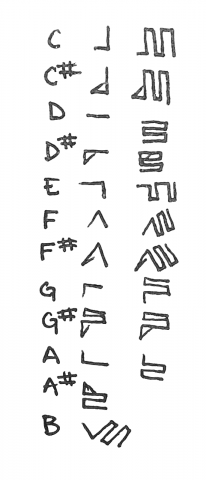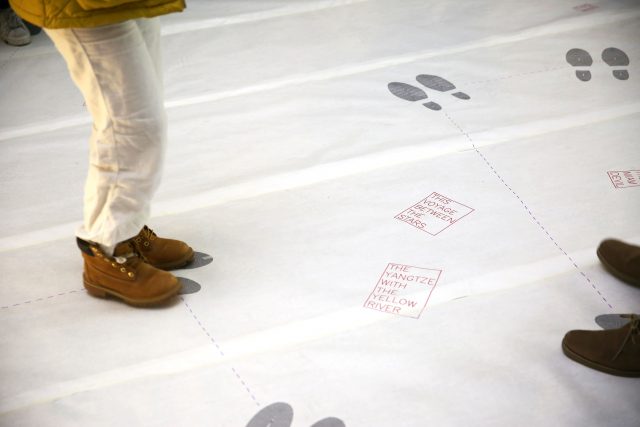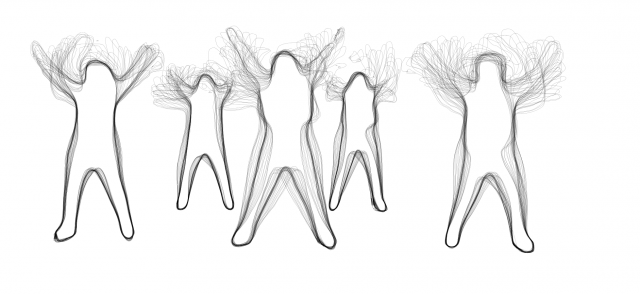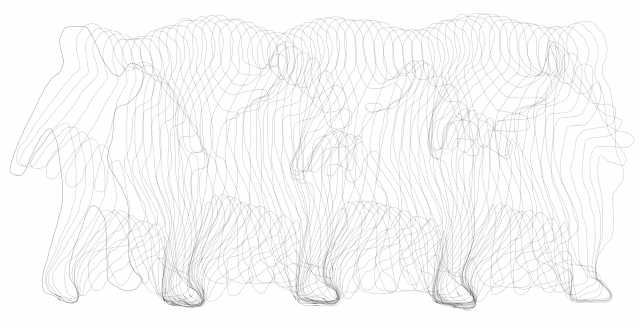The concept of my project was decided after deciding the medium. Making a smooth 3D object in Tiltbrush (like one possibly made in a 3D rendering software) I think is theoretically possible but very hard to do, so the physical form of my object is a result of me working with Tiltbrush instead of against it.
Initially, I messed around with blue/red 3D stereoscopy by plotting different angles of one object on top of each other. I thought it was funny that I went from 3D (TiltBrush) -> 3D (Blender) -> 2D (plotting the SVG) -> “3D” (stereoscopy). Even though this experimentation was not enough to be a final piece, it was useful to do because I realized I liked the layering of color. I may or may not go further into the use of contrasting colors in my final.

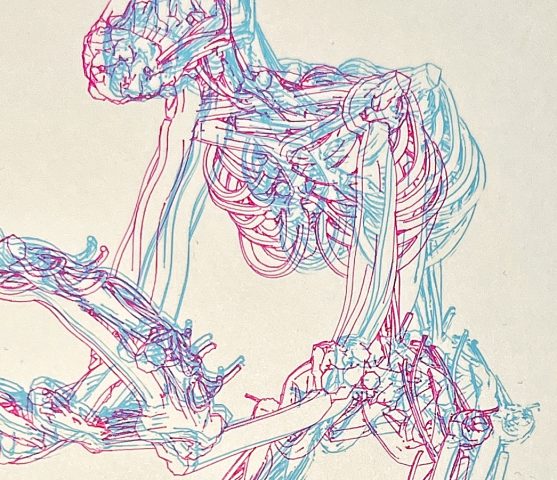

Finally, I have decided to create a sort of hellscape. It is also an experimentation with different mediums and a really funky workflow. Below is the SVG of a draft version. From here, I want to fill the background with more scenes by adding more 3D objects in Blender as well as drawing on top of the plot by hand. I also would like the use the big Axidraw to be able to add more detail. This scene is currently being plotted.
Prior draft of the scene:


Newer draft:

However, this looks more like an up close view of a traditional hellscape. While I like the perspective, I am also intrigued by art that ignores perspective such as seen in The Hellscape Garden of Earthly Delights by Hieronymus Bosch:

3 dimensionality exists within each object and their surroundings, but it is overall flat-looking. I think using the giant Axidraw to create this type of scene would be interesting.
